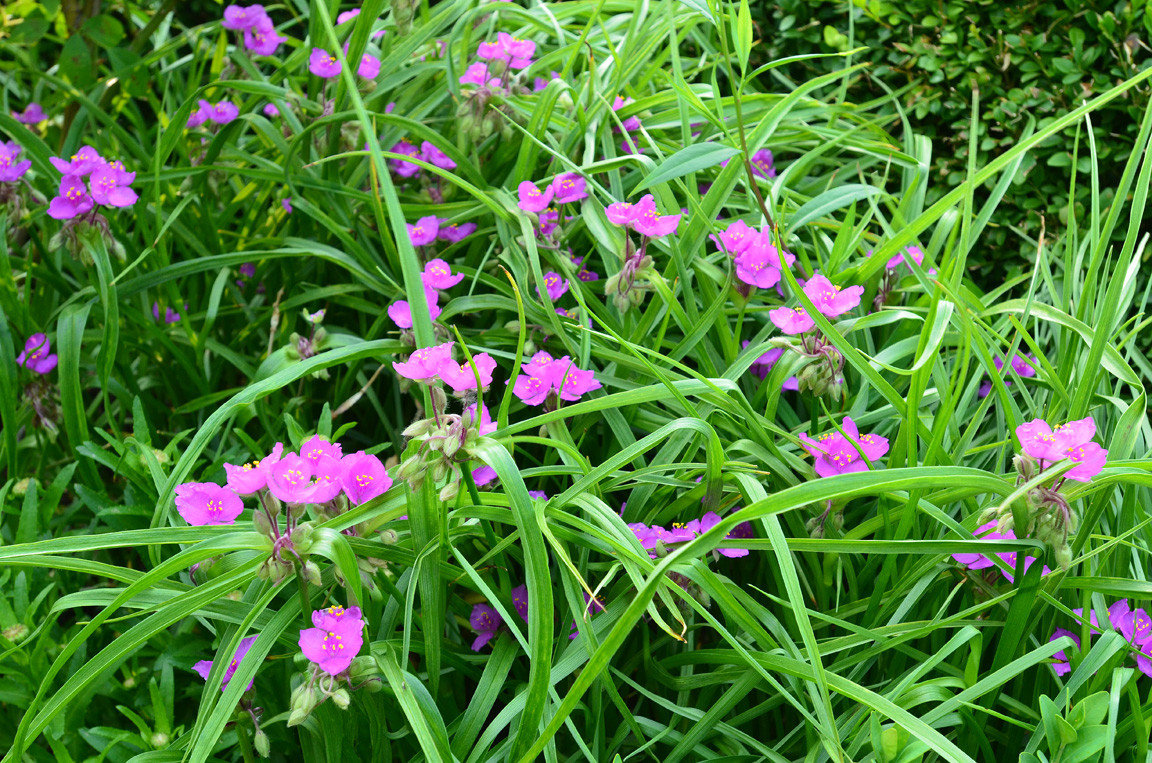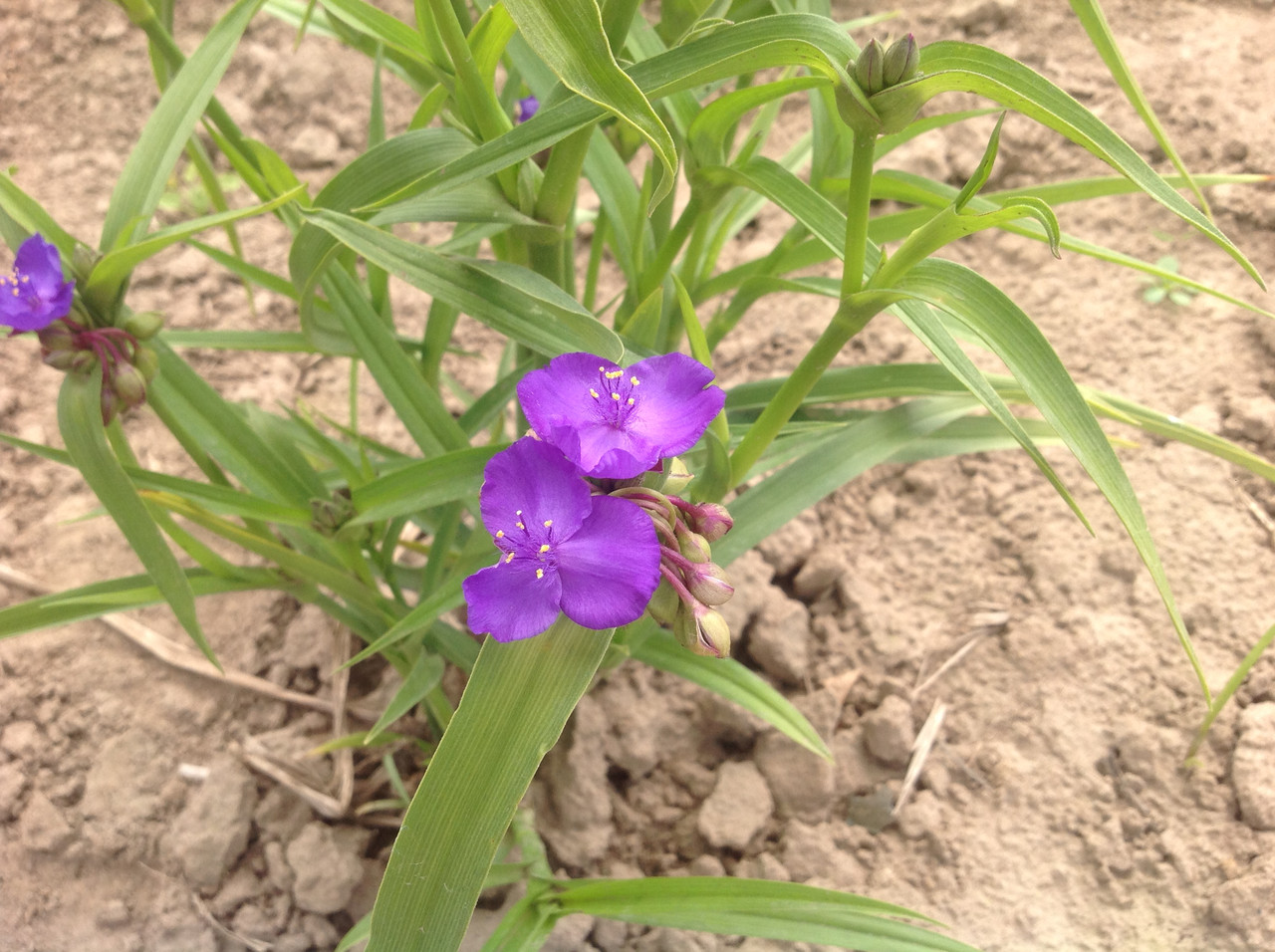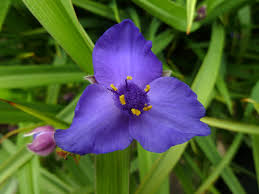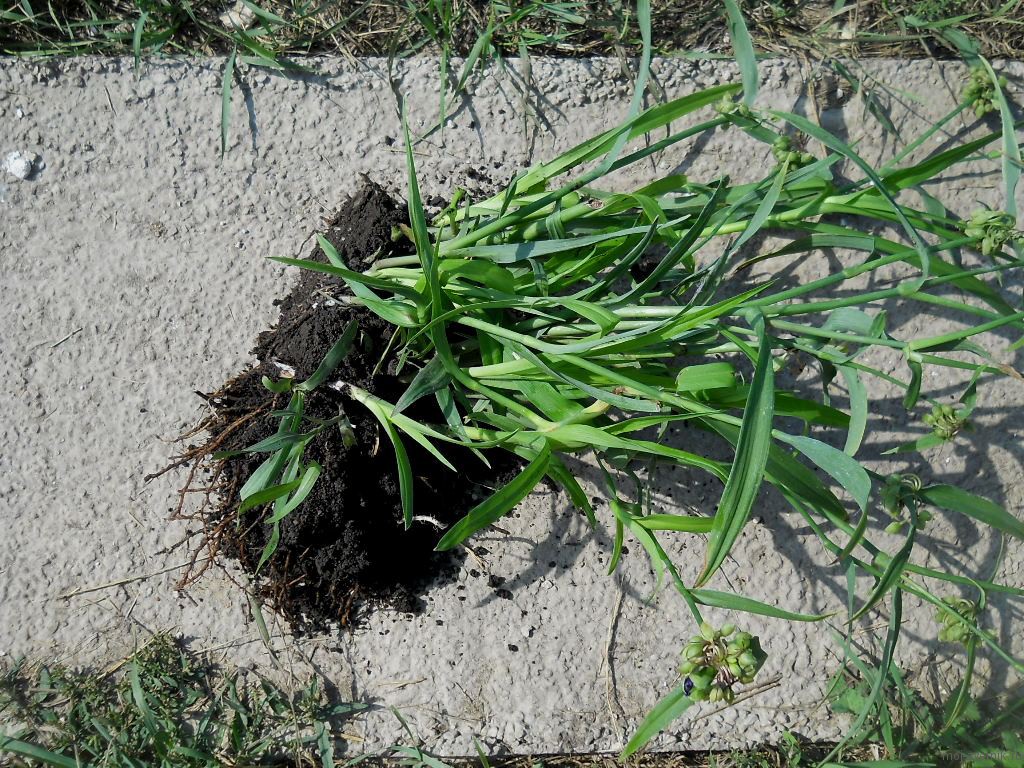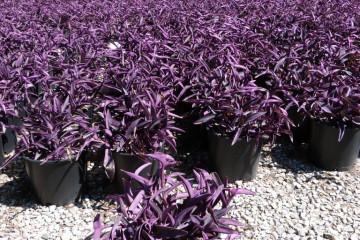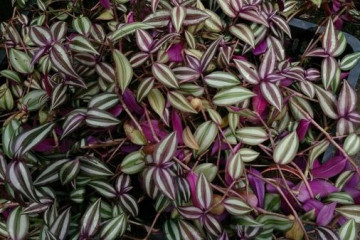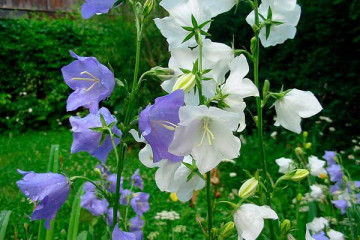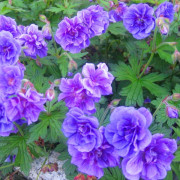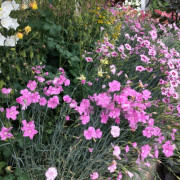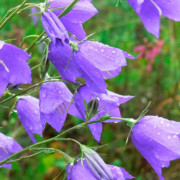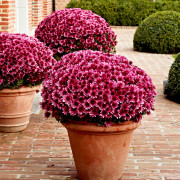Perennial garden Tradescantia in landscape design
Content:
Garden Tradescantia is a perennial bushy plant, the height of which reaches 50-60 cm. The variety of species, resistance to frost and drought have made this plant in demand in landscape gardening design.
Tradescantia garden perennial
This decorative flower belongs to the Kommelinov family and is represented by dozens of varieties. Unlike indoor tradescantia, outdoor plants form shrubs. All species may differ slightly in appearance, but most of these colors have a similar structure.
Pointed wide leaves with smooth edges can be colored in different shades of green: from light green to deep dark. Tall tubular stems form dense thickets. Flowers of all types of tradescantia (including domestic ones) consist of three large petals. In the center of the flower there are stamens with large bright anthers.
Country of origin of tradescantia
The natural habitat of this plant is considered to be the temperate and tropical zone of the United States. From northern Argentina to southern Canada, there are about two dozen species.
The flower got its name in honor of the father and son of the Tradescants, who were collectors, travelers and naturalists. For one of the popular species (Virginia Tradescantia), the country of origin served as the starting point for creating a poetic name.
Popular types
There are dozens of varieties of this plant in nature, but only a few representatives of the genus are most in demand on the territory of Russia.
- Anderson. Dense bushes of this selection variety can reach a height of 80-100 cm. The branches are characterized by increased fragility. They have leaves up to 20 cm long. They are painted in a rich green color, and the flowers can be blue, white, pink or purple.
- Virginskaya. This variety has a more modest size: the average height of the bush reaches 30-40 cm.On erect, strong stems, arrow-shaped leaves of bright green or dark color are attached. It blooms in pink, bright red or light blue flowers. Virginia Tradescantia in planting and care is undemanding, which means it is suitable for most regions of the country.
- Long-rhizome. A miniature representative of the genus, which rarely exceeds 10 cm in height. On the juicy fragile shoots are light green leaves and flowers of delicate blue and pink color. This species is characterized by increased resistance to drought.
- Giant. Such a Tradescantia is a perennial garden flower that, despite its name, grows no higher than 40 cm. You can recognize this variety by its wider leaves and fluffy sepals.
- Ohio. This is one of the largest species, its bushes in natural conditions often reach 1-1.2 m. The leaves of the plant are large, wide, covered with a light whitish bloom. There are villi on the sepals.The buds are often pink or blue, but there are also white buds.
- Subasper. Such tradescantia on the street will surely attract attention. Its zigzag stems can reach a height of 1 m. The leaves of this plant are wide, bright green, often glabrous, but may have villi. The flower petals are light blue in color.
When garden tradescantia blooms
With good care, the plant begins to bloom in the spring with the onset of warm weather. The flowering period ends in late autumn. Thanks to this feature, the perennial is widely in demand among flower growers and landscape designers.
Perennial garden tradescantia: planting and care
The perennial reproduces in three ways:
- dividing the bush;
- cuttings;
- seeds.
If you plant Tradescantia in the garden, cultivation and care will not take much time and effort.
- Watering. This is a moisture-loving flower that needs regular watering. The abundance of moisture is especially important for those shrubs that do not grow in a shaded area. In this case, to protect the soil from drying out, it is worth mulching it with mowed grass or straw. Many species tolerate mild drought persistently, but the constant lack of moisture blocks growth and flowering.
- Top dressing. Perennial Tradescantia requires regular fertilization. Once a month is enough. Mineral and organic compounds (compost, manure humus, bone meal) are suitable for this purpose. The first feeding is in April, the last one is carried out in August.
- Diseases. This plant is rarely affected by disease. One of the most common is the appearance of pupae of nematodes, slugs and bronze beetles.
Place for tradescantia in the garden
Many growers are afraid to plant these plants in open ground. However, experts say that most species take root well in such conditions.
Garden ampelous tradescantia in landscape design
Landscape designers often use this shrub to decorate flower beds and artificial ponds, create flower arrangements in private homes, parks, kindergartens and other facilities. It should be remembered that for ampelous street tradescantia, it is necessary to create partial shade to protect the leaves from the midday heat. For this reason, it is better to select places near fences, in the lower tiers of alpine slides and the shade of other structures.
The peculiarity of species with high stems is that over time, the bush begins to lean to the sides. To achieve a neat appearance, this plant should be placed next to other flowers. In this case, natural support for the stems will form.
Tradescantia in the garden: cultivation and care
During the entire flowering period, wilted flowers should be cut. This stimulates regular bud renewal and prevents self-seeding. This approach will keep the garden well-groomed.
After flowering is over, the bushes are prepared for wintering. To do this, the stems are cut at the roots. Most varieties are hardy enough to survive the cold without insulation, but it's best not to risk it. You can insulate the roots by mulching with moss, humus or peat.
Tradescantia in a flowerpot on the street
To grow Tradescantia in pots on the street, you should choose low-growing varieties: long-rhizome, white-flowered with creeping shoots, Venezuelan and some others. Thanks to the creeping branches, these varieties allow you to create a cascading arrangement with a scattering of flowers.
Taking into account all the above characteristics of this flower, we can conclude that it is easy to care for this plant. Observing the schedule of watering and feeding the plant, you can achieve lush and long flowering.

